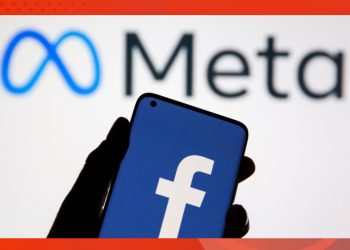Meta is preparing to take a major step forward in its augmented reality (AR) journey by launching new smart glasses later this year. These upcoming models will introduce advanced features aimed at improving user experience while paving the way for Meta’s broader AR ambitions.
A New Chapter in Wearable Tech
The new smart glasses, reportedly designed for athletes, will include features to track performance and provide real-time feedback. These glasses are inspired by Oakley’s Sphaera style and will feature a single camera at the center of the frame to reduce weight.
Oakley, owned by EssilorLuxottica, the parent company of Ray-Ban plays a key role in Meta’s wearables strategy. Meta has partnered with Ray-Ban on its previous smart glasses and even invested in EssilorLuxottica, granting access to its popular designs for future innovations.
The Evolution Toward AR
Meta’s AR development will progress in stages:
- Current Smart Glasses Update (2023): The next version of Meta’s Ray-Ban Stories (rebranded as Ray-Ban Meta) will include a heads-up display. Users will be able to see notifications, view photos, and use basic apps on a small display visible in their lower field of vision.
- AR-Enabled Glasses (2027): Meta plans to launch fully functional AR glasses capable of overlaying digital elements on real-world environments.
These innovations are part of Meta’s larger vision to make smart glasses a practical replacement for smartphones within the next decade.
Focus on Accessibility and Affordability
Unlike Apple’s $3,499 VisionPro AR device, Meta’s strategy centers on making its wearables more accessible. While the newer glasses are expected to be more expensive, around double the price of the current Ray-Ban Meta, Meta is committed to lowering production costs over time to reach broader audiences.
Meta CEO Mark Zuckerberg has emphasized this approach:
“We want to ensure widespread adoption by keeping prices affordable, even as we introduce advanced AR capabilities.”
Challenges in Production and Market Adoption
Meta’s push for affordable AR wearables depends heavily on global supply chains, many of which source components from China. Potential tariffs on Chinese imports under a Trump presidency could impact production costs, making government cooperation vital for Meta’s plans.
Meta’s long-term strategy also hinges on creating a societal shift toward wearables, requiring users to adopt smart glasses as their primary devices instead of smartphones.
What’s Next?
Meta’s roadmap indicates a steady progression toward AR dominance, starting with its latest Ray-Ban Meta smart glasses this year and culminating in affordable AR-enabled glasses by 2027. While challenges like tariffs and user adoption remain, Meta’s focus on innovation and affordability could reshape the future of wearable technology.














Comments 1